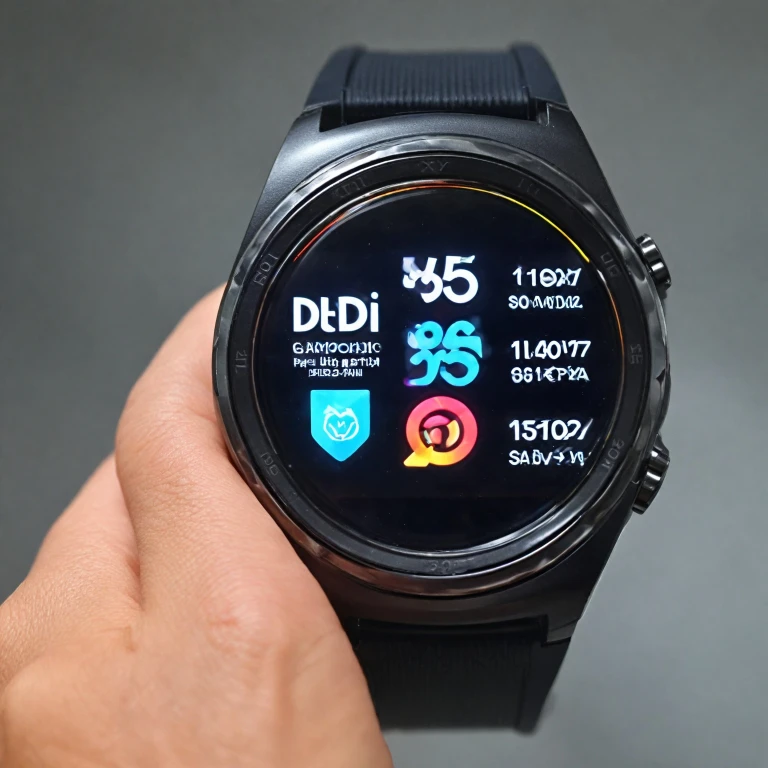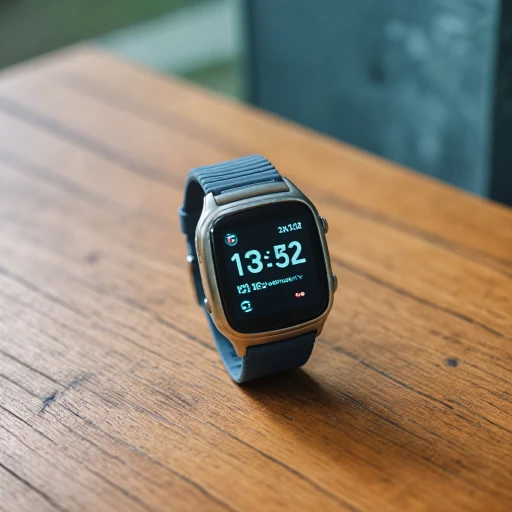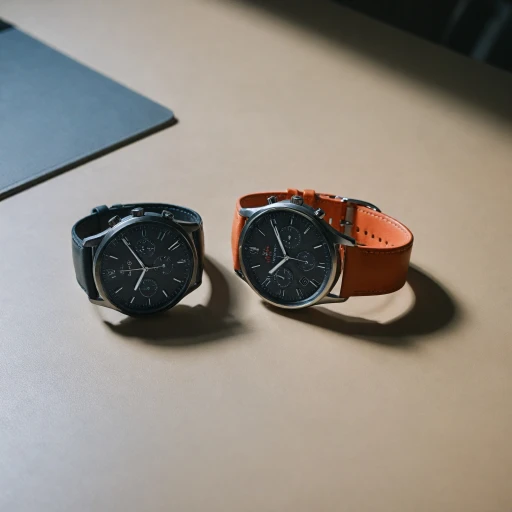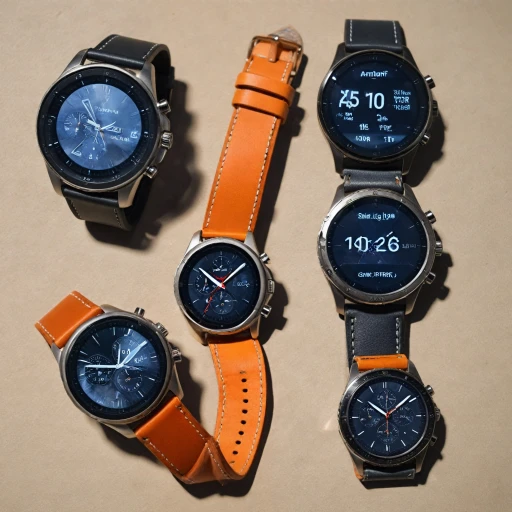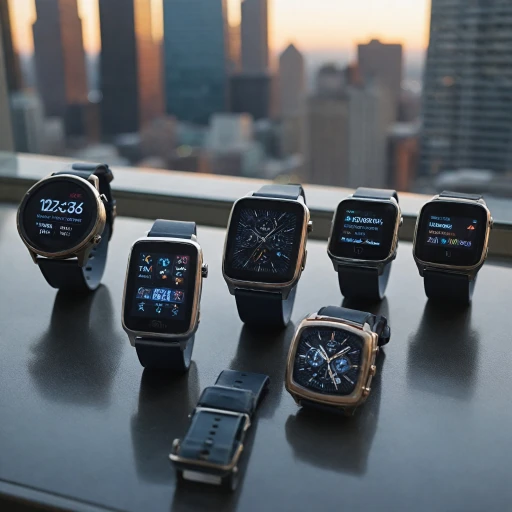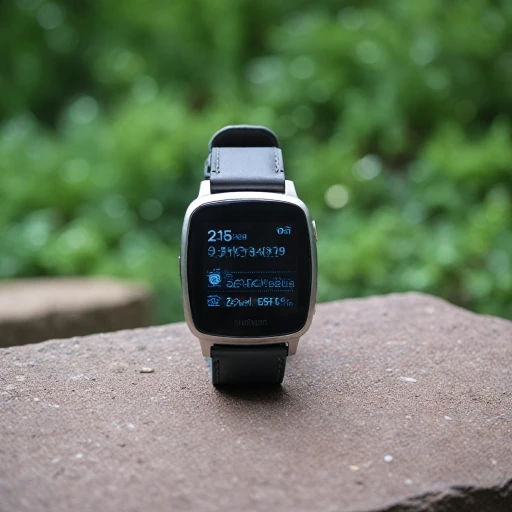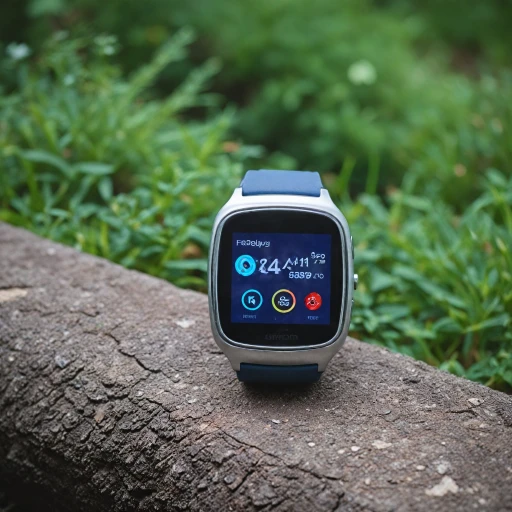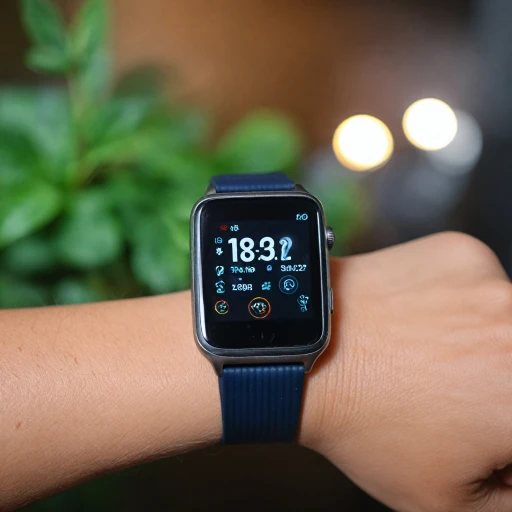
The Evolution of Display Technology
Transformative Display Innovations: A Leap in Visual Experience
The world of smartwatches has witnessed remarkable improvements in display technology, changing how users interact with their devices. Leading manufacturers such as Apple and Samsung have consistently pushed the boundaries of what is possible, delivering vibrant and energy-efficient screens that elevate the user experience.
Among the prominent advancements, AMOLED and OLED displays have become the standard for achieving brilliant colors and deep black levels in latest models. These displays not only make transition between apps smoother but also improve visibility under challenging lighting conditions, a critical feature for users who frequently rely on health and fitness tracking outdoors.
The Apple Watch and Samsung Galaxy Watch series have embraced these dynamic displays, coupled with ultra-thin bezels to maximize screen real estate without increasing the device size. The technology allows for a seamless integration with other smart features like GPS and heart rate monitoring, enhancing both functionality and style.
One cannot overlook the Apple Watch Ultra, which boasts an impressive combination of display toughness and clarity. This makes it ideal for adventure seekers who trust their watches under extreme conditions. Such enhancements cater to a diverse range of user needs, reflecting the trend towards all-in-one devices that blend elegance with practicality.
Moreover, other brands such as Google with its Pixel Watch, and OnePlus, are also stepping up their game by introducing customizable watch faces and interactive interfaces that utilize the latest display technologies effectively. These efforts align with ongoing advancements in personalization and AI, ensuring that smartwatches not only meet but exceed consumer expectations.
For those drawn to combining cutting-edge technology with classic style, exploring the elegance of women's gold watches that seamlessly incorporate modern display elements can be an enlightening experience. This integration extends beyond functionality, promising a sophisticated aesthetic that pairs well with any attire.
Health Monitoring Features
The Cutting-Edge Health Tools of Modern Smartwatches
In the realm of smartwatches, health monitoring capabilities have seen remarkable advancements, offering users vital insights into their well-being. These devices now transcend mere time-keeping, integrating sophisticated health tracking features that cater to both casual users and fitness enthusiasts alike.
Today's high-end smartwatches, like the Apple Watch and the Samsung Galaxy Watch, come equipped with an array of sensors. These are aimed at monitoring critical aspects of health, including heart rate tracking that is pivotal for understanding cardiovascular health. Some models go even further by incorporating blood oxygen level monitoring, a feature that gained significant attention for its role in tracking respiratory health.
Fitness enthusiasts can benefit from the built-in GPS functionality, allowing for precise tracking of workouts. This feature is particularly useful for those monitoring their outdoor runs or cycling sessions, ensuring accurate feedback on distance and pace. Watches like the Google Pixel Watch and the OnePlus Watch have harnessed such functions to offer competitive performance and reliability.
Moreover, advancements in health algorithms mean these devices can provide personalized health recommendations, enabling users to make informed decisions about their lifestyle and fitness routines. The growing emphasis on personalization in the wearable industry signifies a shift towards more tailored health insights.
The integration of water resistance technology across modern smartwatches further enhances their versatility, making them suitable for a broader range of activities, including swimming. These innovations in health tracking are testament to how technology continues to redefine the capabilities of smartwatches, solidifying their place as indispensable tools in our daily lives.
Battery Life and Charging Solutions
Innovative Solutions for Lasting Connectivity
In the world of smartwatches, maintaining robust battery life is essential for users who rely on their devices for a wide range of activities, from fitness tracking to health monitoring and beyond. As these watches become more advanced with features like AMOLED displays and GPS functionality, enhancing battery efficiency has become a focal point for manufacturers. Today, watchmakers are exploring various ways to extend battery life without compromising on features that users love. High-end smartwatches, such as the Apple Watch and Samsung's Galaxy Watch series, are continually pushing the boundaries of technology to offer longer power durations. With a focus on efficiency, some of the best smartwatches integrate adaptive brightness or power-saving modes, optimizing energy use based on the watch's activity. Furthermore, quick charging solutions are becoming more prevalent, catering to the fast-paced lifestyle of smartwatch users. Brands like Samsung and Apple emphasize swift charging capabilities, ensuring that users remain connected with minimal downtime. Another approach gaining traction is the development of solar-powered options, though this remains a niche segment. Innovations in battery technology involve not just the watch's components but also improvements in operating systems for power optimization, with Android and iOS leading the way. By balancing new features with effective energy management, companies strive to maximize the smartwatch experience without the frequent worry of charging. For those diving into the depths of battery enhancements in smartwatches, an exclusive look at various models and their endurance aspects is available in our article on exploring the features of the Amazfit Bip 5.Integration with Smart Home Devices
Seamless Connectivity in Modern Smartwatches
In recent years, the interconnectivity of smart home devices with high-end smartwatches has become a key feature for users seeking enhanced functionality. This integration allows users to control smart home systems such as lighting, security cameras, and thermostats directly from their watch. Leading brands like Apple and Samsung are setting benchmarks with their smartwatches, offering seamless connectivity with various smart home devices through their respective ecosystems. For instance, the Apple Watch can effortlessly synchronize with HomeKit devices, while the Samsung Galaxy Watch integrates smoothly with SmartThings. Such capabilities offer convenience at your fingertips, literally.
The expansion of AI and personalization features mentioned earlier also plays a significant role here. With sophisticated AI algorithms, smartwatches can learn user preferences over time, providing predictive suggestions for smart home controls. Whether it’s adjusting the lighting for your morning routine or setting the perfect temperature before you arrive home, the smart watch is becoming an indispensable assistant.
Smartwatch manufacturers are continuously pushing the envelope when it comes to compatibility with both Android and iOS platforms, ensuring that users have a cohesive experience regardless of their smartphone brand choice. Google’s Pixel Watch, for instance, is known for its fluid integration with Google Home products, reflecting the tech giant’s commitment to creating a connected ecosystem.
In addition to smart home integration, the fitness and health monitoring features of smartwatches complement these advances. Users not only benefit from everyday conveniences but also have tools like heart rate monitors and GPS to keep track of their health and fitness levels. Combining convenience and health tracking makes smartwatches an invaluable gadget in today’s world.
Advancements in AI and Personalization
AI-Powered Personalization in Smartwatches
In the realm of high-end smartwatches, advancements in artificial intelligence (AI) have significantly enhanced user experience by offering personalized features. These watches are no longer just about telling time or tracking steps; they have evolved into sophisticated devices that adapt to individual needs.
AI algorithms in smartwatches, such as the Apple Watch and Samsung Galaxy Watch, analyze user data to provide tailored recommendations. For instance, they can suggest optimal workout routines based on your fitness level or remind you to stand up if you've been sitting for too long. This level of personalization ensures that users get the most out of their devices, making them indispensable in daily life.
Moreover, AI-driven health tracking features have become more precise. Watches now monitor heart rate, blood oxygen levels, and even stress indicators, offering insights that were once only available through medical devices. The integration of AI with health monitoring not only enhances the accuracy of these features but also helps in early detection of potential health issues.
Another exciting development is the use of AI in optimizing battery life. By learning user habits, smartwatches can adjust settings to conserve energy, ensuring that the device lasts longer between charges. This is particularly beneficial for users who rely on their smartwatches for extended periods, such as during outdoor activities or travel.
AI also plays a crucial role in the seamless integration of smartwatches with other smart home devices. Whether it's controlling your smart lights or adjusting the thermostat, these watches act as a central hub, making home automation more intuitive and accessible.
As AI technology continues to advance, we can expect even more innovative features in future smartwatch models, further blurring the lines between technology and personal lifestyle.
